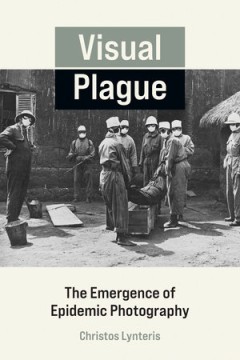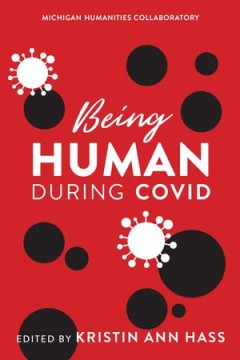Filter by

Ending epidemics :a history of escape from contagion
"From the discovery of microorganisms to the end of smallpox, the story of how we came to understand the infectious diseases that once killed us & how we might escape such diseases in the future"--OCLC-licensed vendor bibliographic record.
- Edition
- -
- ISBN/ISSN
- 9780262373869
- Collation
- 1 online resource
- Series Title
- -
- Call Number
- -

Visual plague :the emergence of epidemic photography
"Visual Plague claims that what epidemic photography did, besides the individual visualization of each outbreak it depicted, was to transform the way in which we relate to infectious diseases, as both biological and historical agents"--OCLC-licensed vendor bibliographic record.
- Edition
- -
- ISBN/ISSN
- 0262370913
- Collation
- 1 online resource.
- Series Title
- -
- Call Number
- -

Economics in the Age of COVID-19
A guide to the pandemic economy: essential reading about the long-term implications of our current crisis. The COVID-19 pandemic has unleashed a firehose of information (much of it wrong) and an avalanche of opinions (many of them ill-founded). Most of us are so distracted by the everyday awfulness that we don't see the broader issues in play. In this book, economist Joshua Gans steps back from…
- Edition
- -
- ISBN/ISSN
- 9780262362801
- Collation
- 1 online resource.
- Series Title
- -
- Call Number
- -

Viruses, pandemics, and immunity
Includes index."Informed and accessible overview of viruses and pandemics, how our immune system combats them, and how diagnostic tests, vaccines, and antiviral therapies work to form the foundation of public health"--OCLC-licensed vendor bibliographic record.
- Edition
- -
- ISBN/ISSN
- 0262363461
- Collation
- 1 online resource.
- Series Title
- -
- Call Number
- -

Visual Plague: The Emergence of Epidemic Photography
How epidemic photography during a global pandemic of bubonic plague contributed to the development of modern epidemiology and our concept of the “pandemic.” In Visual Plague, Christos Lynteris examines the emergence of epidemic photography during the third plague pandemic (1894–1959), a global pandemic of bubonic plague that led to over twelve million deaths. Unlike medical photography…
- Edition
- -
- ISBN/ISSN
- 9780262370912
- Collation
- -
- Series Title
- -
- Call Number
- 614.4

Being Human during COVID
Science has taken center stage during the COVID-19 crisis; scientists named and diagnosed the virus, traced its spread, and worked together to create a vaccine in record time. But while science made the headlines, the arts and humanities were critical in people’s daily lives. As the world went into lockdown, literature, music, and media became crucial means of connection, and historians remin…
- Edition
- -
- ISBN/ISSN
- 9780472902507
- Collation
- -
- Series Title
- -
- Call Number
- 614.4 HAS b
 Computer Science, Information & General Works
Computer Science, Information & General Works  Philosophy & Psychology
Philosophy & Psychology  Religion
Religion  Social Sciences
Social Sciences  Language
Language  Pure Science
Pure Science  Applied Sciences
Applied Sciences  Art & Recreation
Art & Recreation  Literature
Literature  History & Geography
History & Geography